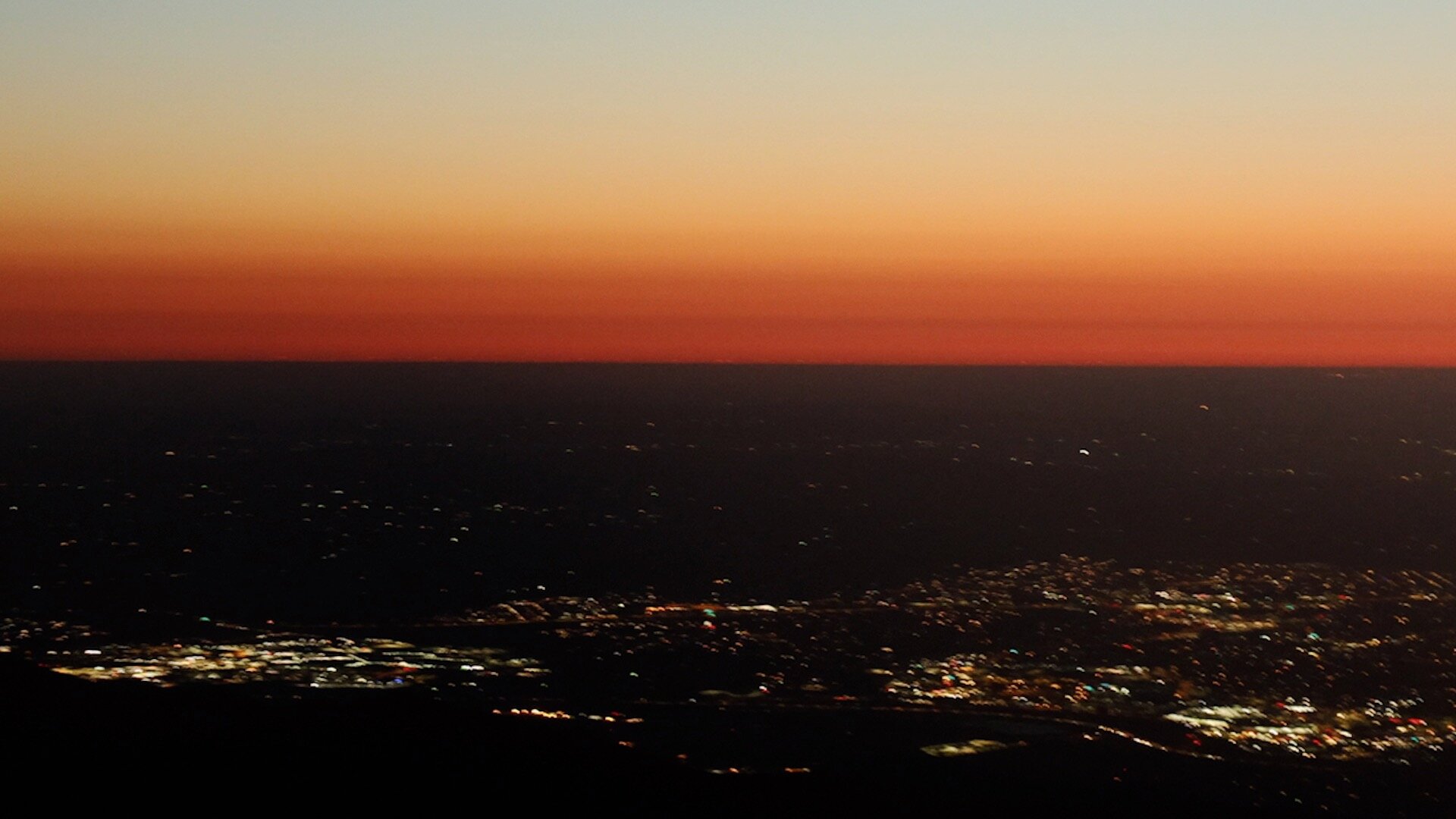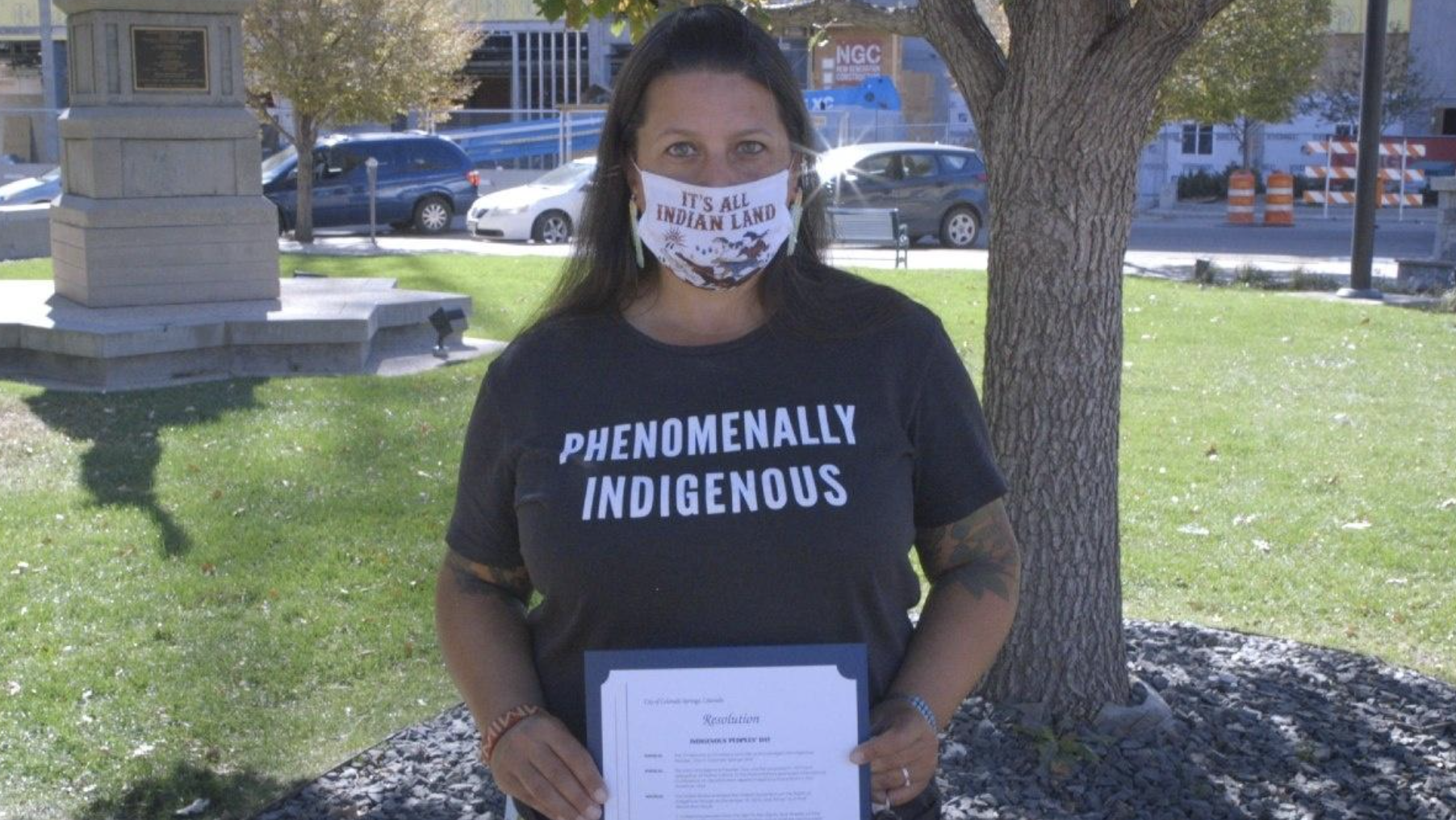Sunrise from Sun Mountain

COLORADO SRPINGS, Colo. — A sunrise gathering and blessing on Indigenous Peoples Day honored Native representatives and their relationships to ecology and spirituality as the City of Colorado Springs joined in honoring the 48 federally recognized Indigenous and Native American tribes that call Colorado home.
Dozens gathered at 14,000 feet before dawn to view the sunrise from Pikes Peak, known to the Southern Ute as Tavá Kaa-vi, or Sun Mountain. Its one of a few times each year visitors are able to enter the park in the early morning hours.
Following an outdoor blessing with Southern Ute Sundance Chief Byron Frost, remarks were offered by Frost, Tribal Historic Preservation Officer for the Southern Ute Indian Tribe Cassandra Atencio, Veronica Tiller of the Jicarilla Apache Nation and Lucille Echohawk of the Pawnee Nation. The program was led by Pikes Peak manager Skyler Rorabaugh with the City of Colorado Springs.
Each guest spoke about the importance of the mountain to their tribe’s origin, lifestyle and way of being.

Colorado Springs from above at dawn. (Kate Perdoni)
“The name for this mountain in Jicarilla means ‘the mountain that holds up the sky,’” Tiller said. “It's a sacred place. It's a place of honor.”
Atencio said the Southern Ute “have never lost our connection to Tavá Kaa-vi” despite waves of western settlement resulting in the ongoing death and displacement of her people. She encouraged visitors to think about the changing seasons in relation to their lives.
“When we think about this being Indigenous Day, it's about what this season means,” Atencio said. “It's fall time. Fall time means harvesting and gathering things that you have grown and putting them forth. The season here is about growth, about where you're going, what you have grown through the summer, and what you're going to take from it.”

Visitors gathered for the sun rise on Indigenous Peoples Day. (Kate Perdoni)
Frost invited a perspective shift in regard of the land. “We must always remember we don't own this place,” he said. “We don't own Mother Earth. We take care of it.”
“Look outside, and look at what you see. It will bring your spirit back to you. You'll see the water, the trees, and all these things. And listen to what we can hear in the spirit world,” Frost said. “We all have different higher powers to take care of your self. Use it. Be in unity with your spirit.”

Sunrise from Tavá Kaa-vi (Sun Mountain/Pikes Peak) credit: Kate Perdoni
Echohawk explained that American general Zebulon Pike, for whom Pikes Peak is named, lived with the Pawnee for a year before attempting to climb the mountain — which he never did summit.
“I just treasure living in this beautiful place,” Echohawk said. “This land is very sacred to the Pawnee.”
“This is a sacred place for all of us. It's the place that brings unity to all of us,” Tiller acknowledged.
In 2020, the Colorado Springs City Council passed a unanimous vote to permanently create Indigenous Peoples' Day as the second Monday of each October after Colorado state legislators voted to abolish Columbus Day.

Other Colorado cities, including Aspen, Boulder, Crested Butte, Durango, and Gunnison also created permanent resolutions to honor the land’s first peoples.
[Related: Boulder honors Indigenous Peoples' Day with celebration and reconciliation]




“We want to thank everyone for being here on this special day,” said Rorabaugh, who said a sunrise Indigenous Peoples' Day event will continue to be held annually on the peak. “We had a wonderful sunrise.”
Kate Perdoni is the Engagement Journalism Director at Rocky Mountain PBS. kateperdoni@rmpbs.org